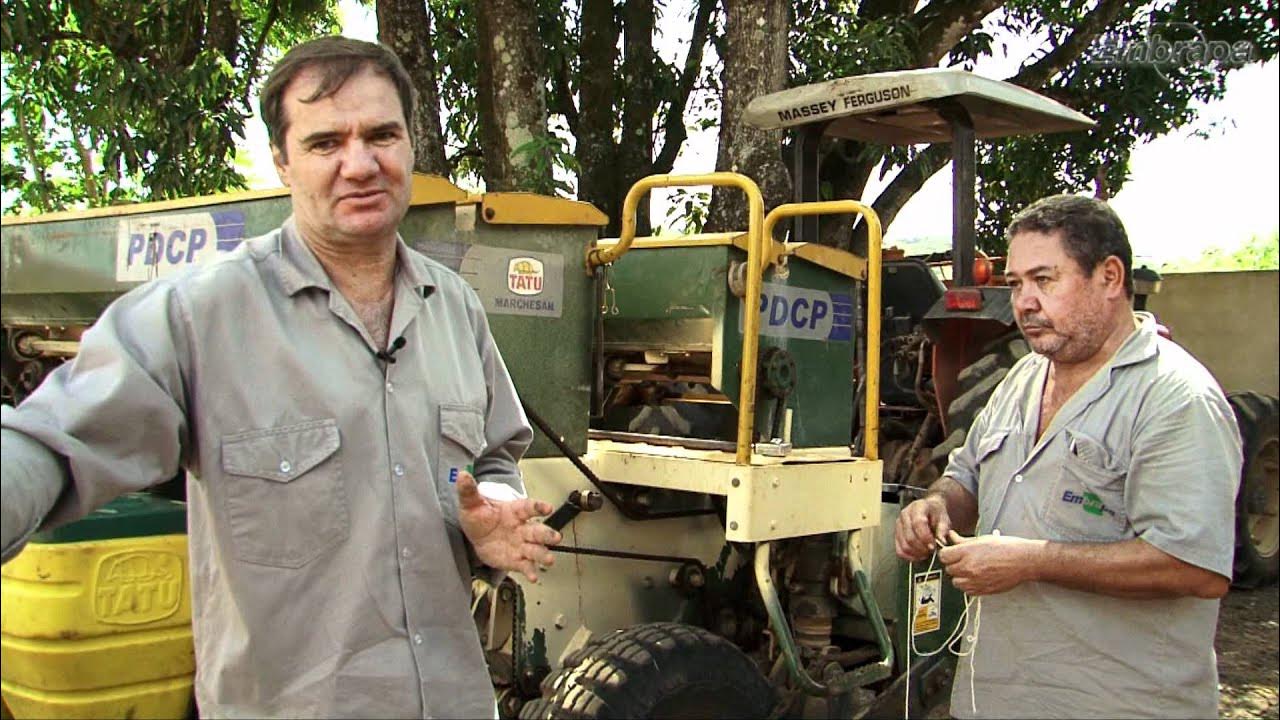Mecanização Agrícola - Parte III
Summary
TLDRThis video script focuses on adjusting a planter's fertilizer application system, emphasizing its importance alongside seed planting. The process involves measuring the drive wheel’s perimeter, calibrating the fertilizer output by adjusting the gear system, and collecting precise amounts of fertilizer. The operator ensures the fertilizer is dry and evenly distributed, comparing actual results to desired targets. After testing and adjusting, the correct fertilizer amount is achieved, ensuring efficiency in field operations. The process is guided by a combination of measurements, trial and error, and reference tables to optimize the fertilizer application for crop planting.
Takeaways
- 😀 The process of calibrating a seeder involves adjusting both the seed and fertilizer application, both being equally important.
- 😀 The first step is to measure the driving wheel's perimeter to ensure accurate fertilizer distribution.
- 😀 The fertilizer should be dry without stones to ensure optimal distribution when applied.
- 😀 It's important to calculate the wheel's diameter and perimeter, marking it for proper measurement.
- 😀 After measuring the perimeter, a specific number of wheel rotations is used to determine the correct fertilizer amount.
- 😀 The necessary fertilizer quantity per hectare (300 kg) is based on soil analysis and the row spacing (70 cm).
- 😀 A test is conducted by rotating the wheel five times (13 meters) and collecting the fertilizer to verify it matches the required amount.
- 😀 Adjustments are made based on the collected amount to match the target weight by recalculating wheel rotations or the gearbox settings.
- 😀 The goal is to maintain a constant rotation speed of the wheel to simulate field conditions and ensure uniform fertilizer application.
- 😀 The gear system is adjusted (changing the gear size) to control the fertilizer flow by altering the motor's rotation speed.
- 😀 The process involves trial and error, with a reference table as a guide to initial adjustments, ensuring the correct fertilizer amount is applied.
Q & A
What is the first step in the process of adjusting the fertilizer dispenser on the planter?
-The first step is to load the fertilizer into the planter's hopper, ensuring it is dry because moisture can affect the amount applied per area.
Why is it important for the fertilizer to be dry before adjusting the dispenser?
-The fertilizer must be dry because moisture alters the amount applied per area, potentially affecting the distribution.
How do you measure the correct amount of fertilizer dispensed by the planter?
-The correct amount of fertilizer is measured by calculating the wheel perimeter, running the wheel a specified number of rotations, and collecting the fertilizer that falls out during those rotations.
What is the significance of the wheel perimeter measurement?
-The wheel perimeter helps determine how far the planter will move per rotation, which is essential for calculating the amount of fertilizer applied.
How is the number of rotations related to the measurement of fertilizer?
-By measuring the perimeter and completing a set number of rotations, you can calculate the area covered and collect the fertilizer to compare it with the required amount.
What is the target amount of fertilizer per hectare according to the soil analysis?
-The soil analysis indicates that 300 kg of fertilizer is needed per hectare, which corresponds to 21 grams per meter.
How is the fertilizer rate adjusted if the collected amount is insufficient?
-The fertilizer rate is adjusted by changing the rotation speed of the motor shaft through the gearbox, either increasing or decreasing the speed to control the fertilizer flow.
What is the role of the gearbox in the adjustment process?
-The gearbox allows you to modify the speed of the motor shaft, thus controlling the rate at which fertilizer is dispensed by either increasing or decreasing the speed.
How do you ensure the fertilizer application is consistent with the target amount?
-You check the amount of fertilizer after a specified number of rotations, compare it with the required amount, and make adjustments by altering the motor shaft speed.
What is the final step after adjusting the fertilizer dispenser?
-The final step is to confirm the adjustment by repeating the process and verifying that the fertilizer dispensed matches the desired amount. Once confirmed, the machine is ready to be used in the field.
Outlines

This section is available to paid users only. Please upgrade to access this part.
Upgrade NowMindmap

This section is available to paid users only. Please upgrade to access this part.
Upgrade NowKeywords

This section is available to paid users only. Please upgrade to access this part.
Upgrade NowHighlights

This section is available to paid users only. Please upgrade to access this part.
Upgrade NowTranscripts

This section is available to paid users only. Please upgrade to access this part.
Upgrade Now5.0 / 5 (0 votes)





